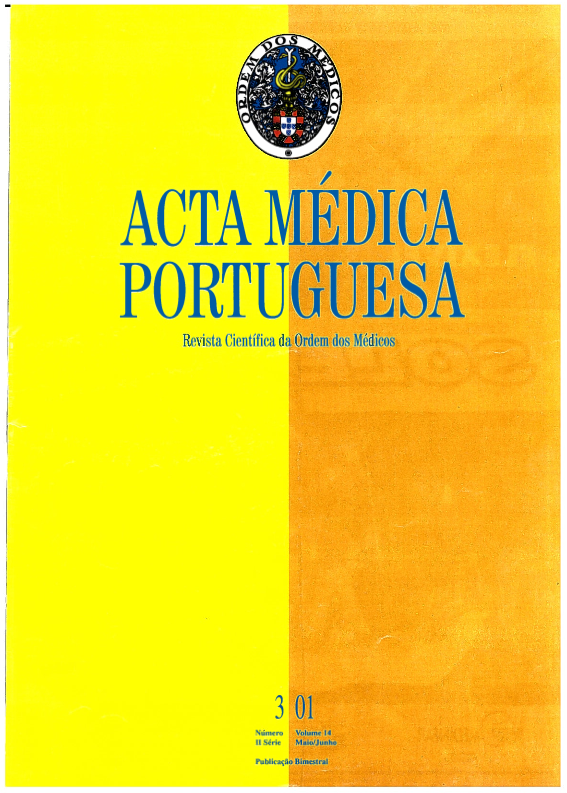Epidemiologia da anorexia nervosa. Prevalência da anorexia nervosa em adolescentes do sexo feminino nos distritos de Lisboa e Setúbal.
DOI:
https://doi.org/10.20344/amp.1850Resumo
Prevalence studies of anorexia nervosa (AN) have shown differences depending of the country and method applied. The partial syndrome is being emphasized. There has been no epidemiological study done on AN in the Portuguese population of continental Portugal. Our objectives were: 1) to study the prevalence of AN in Portuguese populations; 2) to study the presence of partial syndrome and of body image disturbance; 3) to calculate the number of girls dieting; 4) to correlate with other variables. A population of 2,398 girls ranging 10 to 21 years old, from 30 State secondary schools in the Lisbon and Setubal districts were studied. A questionnaire was answered with questions allowing assessment of all DSM IIIR criteria for AN. RESULTS: Prevalence of AN--0.37%, partial syndrome--12.6%, body image disturbance without weight loss--7%, wish to decrease weight in normal or low weight girls--38%, overweight--15.3%, the peak of age for AN was 15 years, the most prevalent socio-economic class for AN was 2 (scale 1 (higher) to 5). School performance was worse with AN and the age menarche was sooner.Downloads
Downloads
Como Citar
Edição
Secção
Licença
Todos os artigos publicados na AMP são de acesso aberto e cumprem os requisitos das agências de financiamento ou instituições académicas. Relativamente à utilização por terceiros a AMP rege-se pelos termos da licença Creative Commons ‘Atribuição – Uso Não-Comercial – (CC-BY-NC)’.
É da responsabilidade do autor obter permissão para reproduzir figuras, tabelas, etc., de outras publicações. Após a aceitação de um artigo, os autores serão convidados a preencher uma “Declaração de Responsabilidade Autoral e Partilha de Direitos de Autor “(http://www.actamedicaportuguesa.com/info/AMP-NormasPublicacao.pdf) e a “Declaração de Potenciais Conflitos de Interesse” (http://www.icmje.org/conflicts-of-interest) do ICMJE. Será enviado um e-mail ao autor correspondente, confirmando a receção do manuscrito.
Após a publicação, os autores ficam autorizados a disponibilizar os seus artigos em repositórios das suas instituições de origem, desde que mencionem sempre onde foram publicados e de acordo com a licença Creative Commons









